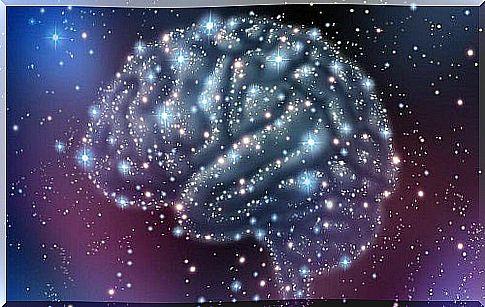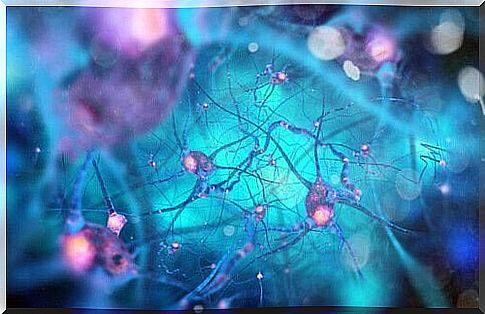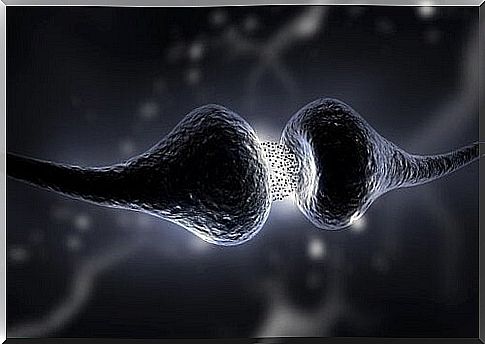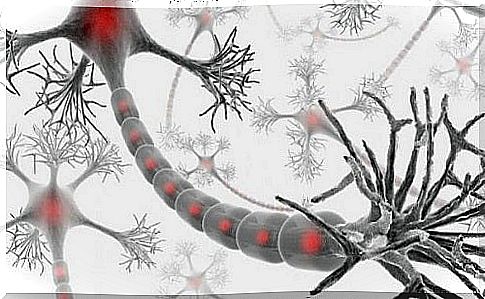What Exactly Is The Function Of Neurotransmitters?

We have all heard of neurons or nerve cells that communicate with each other by means of electrical impulses. It is indeed true that some of the synapses are purely electrical. Yet it is mainly chemical elements that act as mediators in most of these compounds. We call these chemicals neurotransmitters. Neurons are able to participate in various cognitive functions such as learning, memory and perception. This is due to the function of neurotransmitters.
Today, the neuronal synapses use more than a dozen neurotransmitters. People have come to know how neurotransmission works. This has led to tremendous progress in designing and understanding the effects of psychotropic drugs. The best-known neurotransmitters are: serotonin, dopamine, noradrenaline, actylcholine, glutamate and GABA (gamma-aminobutyric acid).
In this article, we will explore the following aspects to gain a better understanding of the principles of neurotransmission. First, we get to know the different ways that neurotransmitters affect the synapse. Second, we will talk about signal transduction. In the action and function of neurotransmitters, this is the most common method.

The different effects in the function of neurotransmitters
The main function of neurotransmitters is to regulate the synapse between neurons. This makes the electrical connections more complicated. That also means that there are more options. Many nervous system functions wouldn’t work if neurotransmitters didn’t exist and nerve cells acted like simple wires.
However, the way neurotransmitters affect nerve cells is not always the same. The chemical effects alter the synapses in two different ways.
Two types of effects:
- Via ion channels: The possibility that there is a difference between the outside and the inside of the nerve cell causes electrical impulses. The movement of the ions (electrically charged particles) causes this differential (decrease or increase) to vary. The nerve cell will be stimulated when it reaches the activation threshold. Some neurotransmitters have the function of attaching themselves to the ion channels located in the membrane of the nerve cell. When they attach, they open this channel. This allows a greater movement of ions, which ensures that the nerve cell is stimulated.
- Through a metabotropic receptor: This is a more complex arrangement. Here the neurotransmitter attaches to the receptor located in the membrane of the nerve cell. However, this receptor is not a channel that opens and closes. On the other hand, it produces another substance inside the nerve cell. When the nerve cell attaches to the neurotransmitter, it releases a protein inside that changes its structure and how it works.
In the next part of this article, we will further investigate the type of neurotransmission through a metabotropic receptor.

The signal transduction sequence
The signal transduction sequence is the process by which the neurotransmitter controls the functioning of a nerve cell. We will focus here on the action of neurotransmitters that perform this function through metabotropic receptors. After all, this is the most common way they work.
The four different stages of the process
- The first messenger or neurotransmitter: First, the neurotransmitter clings to the metabotropic receptor and changes its composition. This makes the receptor match a substance called the G protein. The combination of the receptor with the G protein leads to the secretion of an enzyme on the inside of the membrane. This causes the release of the second messenger.
- The second messenger: The second messenger is the protein that releases the enzyme linked to the G protein. Its job is to traverse the nerve cell until it finds a kinase or phosphatase. These substances are activated when the second messenger attaches itself to one of them.
- The third messenger (kinase or phosphatase): This varies because it depends on what the second messenger finds, a kinase or a phosphatase. The encounter with a kinase will cause it to be activated and will trigger a process of phosphorylation in the nucleus of the nerve cell. As a result, the nerve cell’s DNA starts making proteins that it wasn’t making before. However, if the second messenger encounters a phosphatase, it will have the opposite effect. It will deactivate the phosphorylation process and stop the production of certain proteins.
- The fourth messenger or phosphoprotein (any group of proteins containing chemically linked phosphoric acid): When the kinase is activated, it sends a phosphoprotein to the neuronal DNA. The intent is to provoke phosphorylation. The phosphoprotein will activate a transcription factor that will cause the activation of a gene. It will also trigger the formation of a protein. Depending on its properties, this protein will trigger different biological reactions. Ultimately, those will change neuronal transmission. When the phosphorylation is activated, it destroys the phosphoprotein. This causes the phosphorylation process to stop.

Finally
Neurotransmitters are very important chemicals in our nervous system. They are responsible for regulating and transferring information between the different brain nuclei. Their effects on nerve cells can also last from a few seconds to months or even years. The study of neurotransmitters allows us to understand their relationship to many complex cognitive processes such as learning, memory and attention.









